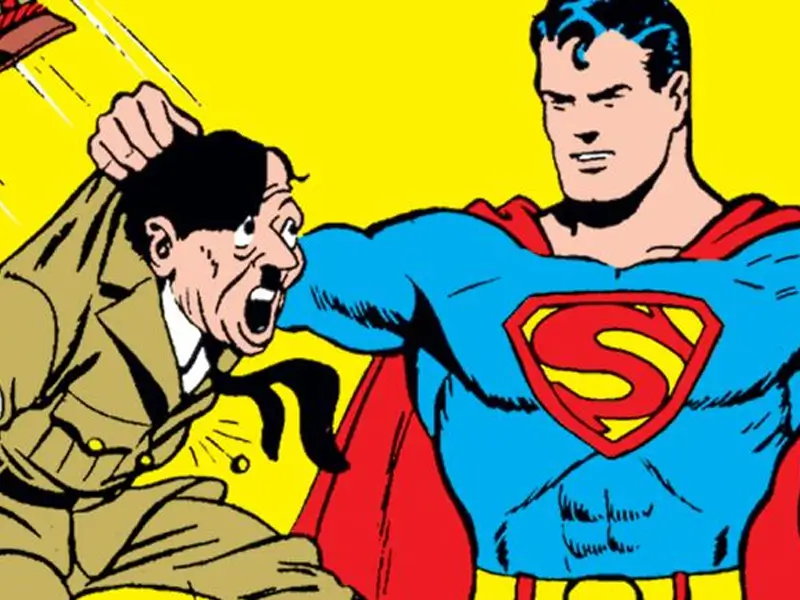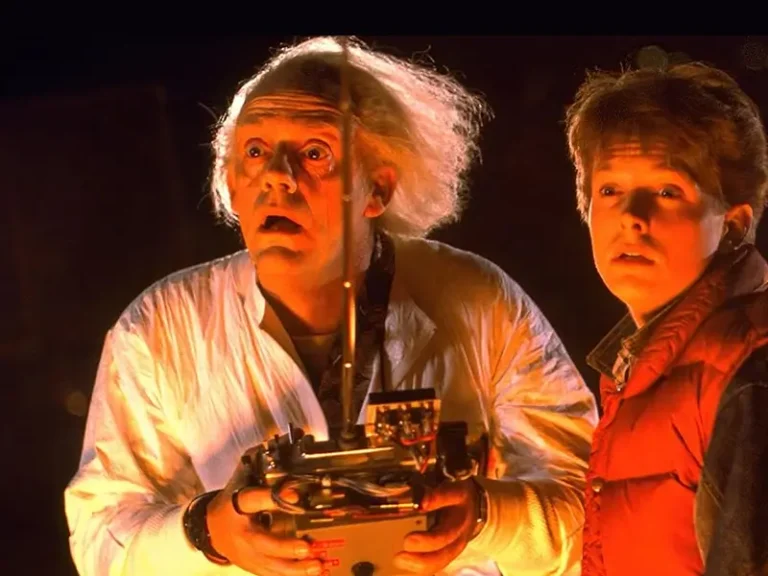When Superman first hit the shelves in 1938, the world wasn’t just reading comic books — it was inching toward war. The skies over Europe were darkening fast. Nazi forces had already marched into Austria. Poland was next. And though the United States hadn’t yet entered the war, the tension was boiling at home.
America was split. One camp wanted to intervene. The other insisted on staying out, waving the “America First” banner. But in the middle of that debate, a caped figure from Krypton quietly picked a side — and eventually, he made it loud and clear.
Superman, originally just a comic book character, became a symbol of resistance against tyranny.
The heat of war didn’t take long to seep into the comic strips. First, subtly — then all at once. Superman started appearing in stories where he was punching stand-ins for fascist villains. He even rescued Santa Claus from Nazi kidnappers. At one point, he joined campaigns to sell war bonds.
Yes, Superman — a fictional alien in red and blue — became part of real-world wartime propaganda.
Fiction vs Fascism: Superman’s Early Clashes with the Nazis
Superman’s creators, Jerry Siegel and Joe Shuster, were children of Jewish immigrants. Though they didn’t publicly advocate for war, they used their creation to send a message — a very deliberate one.
In Action Comics Issue #17, Superman was shown fighting soldiers who bore a suspicious resemblance to Nazi troops. Their uniforms and helmets were clear nods, but no names were mentioned. At least, not yet.
In February 1940, Superman went head-to-head with a villain named Amarok, from a fictional country called Blitzen. It didn’t take a genius to realize Amarok was Hitler in disguise. But that disguise didn’t last long.
Superman finally took off the gloves — and named names.
In a special strip for Look Magazine, Superman literally grabbed Hitler by the collar. Not just Hitler — Stalin too. The artwork made no attempt to hide who the villains were. The message was now out in the open: Superman was fighting fascism, and he wasn’t doing it quietly anymore.
Comic Books Became Weapons
By Action Comics Issue #43 (October 1940), a Nazi paratrooper was shown firing at Superman, with a swastika clearly visible on his sleeve. A month later, Superman smashed a Nazi cannon in another issue.
From comic books to animated shorts to radio programs — Superman’s war effort was in full swing. The character had leaped out of fiction and landed squarely in the real world’s battle for justice.
Superman didn’t just fight crime — he fought ideologies.
And that’s how a made-up alien in tights became a historical force — a pop culture weapon wielded against totalitarianism, decades before hashtags and online activism ever existed.
Superman: Not Just a Battlefield Hero — A Weapon of Propaganda
Once the war was in full swing, the U.S. government realized something crucial: Superman wasn’t just a comic book icon — he was a cultural asset. A symbol that could move minds, not just leap tall buildings.
Superman was drafted into the war — not to fight with fists, but with influence.
He was used to sell war bonds. His image appeared on posters and stamps. The goal? Rally support. Inspire belief. And shape public opinion.
Historian Paul S. Hirsch, in his book Pulp Empire, writes that the U.S. government funded a council called the Writers’ War Board — a kind of unofficial propaganda unit. From 1943 onward, this group actively used comic books to sway hearts and minds in favor of the war effort.
The impact was real.
Half the U.S. military reportedly read comics. Superman was their #1 favorite.
In 1941 alone, over 10 million copies of Superman were sold. And from that very era came one of pop culture’s most enduring slogans — “Truth, Justice, and the American Way.” It wasn’t born in a comic book but in the 1942 Adventures of Superman radio series.
Ironically, Superman was an immigrant himself — a refugee from Krypton who chose to adopt Earth, and America, as his home. That made him the perfect poster hero for a country built on immigration, fighting a war against fascism.
Superheroes Unite: A War Against Evil
Superman didn’t fight the Axis alone. Comic books during the 1940s became an all-out superhero battleground.
Batman, Wonder Woman, Captain Marvel, Sub-Mariner, Green Hornet, Human Torch, even Frankenstein joined the fictional frontlines. But among all these caped crusaders, Superman stirred the strongest reactions — and drew the sharpest counterattacks.
Why?
Because his very name — “Superman” — clashed directly with Nazi ideology.
The Nazis had hijacked philosopher Friedrich Nietzsche’s concept of the Übermensch (superman) to push their toxic “Master Race” agenda. Meanwhile, Jerry Siegel — a Jewish-American creator — was redefining the word through a hero who stood for the exact opposite: not domination, but protection.
In April 1940, Nazi propaganda outlets openly attacked Siegel. They accused him of spreading “hatred, laziness, and injustice” among American children — a bitter irony, considering their own regime.
Superman became more than a fictional hero. He became a direct ideological threat to fascism.
Why Superman Never Stepped Onto the Battlefield
But here’s a curious twist: Superman never actually fought in the war. Not in Europe. Not in the Pacific. Not even in a dream sequence. Why?
Because if Superman won the war in fiction, what would that say about the real soldiers?
Author Larry Tye, in Superman: The High-Flying History of America’s Most Enduring Hero, explains it clearly: If Superman ended the war in five minutes, it would undercut the sacrifice of real troops. And if he couldn’t win it? That would shatter the illusion of his power.
So they found a clever workaround.
In a 1942 newspaper strip, Clark Kent tries to enlist. But he accidentally reads the wrong medical chart with his X-ray vision — and gets declared unfit for service. Problem solved. Superman stays out of uniform, but his spirit still marches with the troops.
Post-War Superman: New Era, New Enemies
When World War II ended, Superman didn’t fade — he adapted. The Nazis disappeared from the pages, but new villains rose in their place. The world changed, and so did the hero.
But his wartime legacy remained carved into pop culture history.
Comics historian Danny Fingeroth said it best: “Siegel and Shuster created a character who had the perfect mix of action and emotion, and who could change himself over time.”
And author Harry Brod added a lasting truth: “Wars aren’t won just by bullets and bombs. They’re won by morale. Superman was part of that fight.”
source: history.com
If this article made you think—bookmark Wiz Fact.
We’re just getting started.
Smart, rebellious ideas are what we do here. Soon, we’ll launch our newsletter too—so these insights can fly straight to your inbox. No fluff. Just facts worth knowing.








